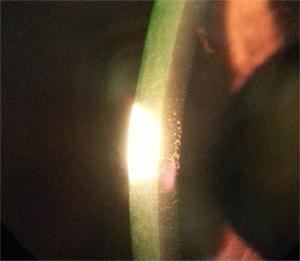Fuch's Endothelial Dystrophy
Fuch's endothelial dystrophy information sheet
Fuch's endothelial dystrophy is an inherited degenerative condition of the cornea. The cornea is the clear front windshield of the eye. In Fuch's dystrophy the cornea becomes slowly cloudy over time, causing blurred or hazy vision. Patient’s with Fuchs can also experience glare.
What causes Fuch's?
Fuch's is thought to be a genetic condition. The genetic defect causes an accelerated deterioration of the water pumps of the cornea with age. As these water pumps deteriorate, the cornea becomes swollen and the vision becomes blurred.
Who gets Fuch's?
Fuch's is more common in females. Typically, it appears around middle age and very gradually gets worse.
How is it diagnosed?
Typically, there are no symptoms to begin with and your optometrist or ophthalmologist may pick it up. Microscopic spots on the back surface of the cornea are an early clue. Eventually you may notice blurred vision, which is worse in the morning.

Spots seen on back surface of the cornea with a microscope.
These spots are representing areas of water pump damage.
How is Fuch's treated?
Initially hypertonic saline or salty teardrops may help to reduce the swelling and improve vision.
Eventually most people will require a corneal transplant. This can be either a full thickness transplant or a partial (endothelial) transplant. Transplants have a good success rate but there are risks such as rejection.







